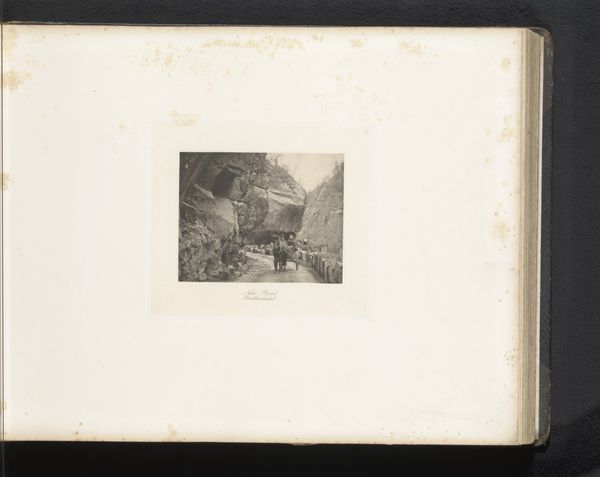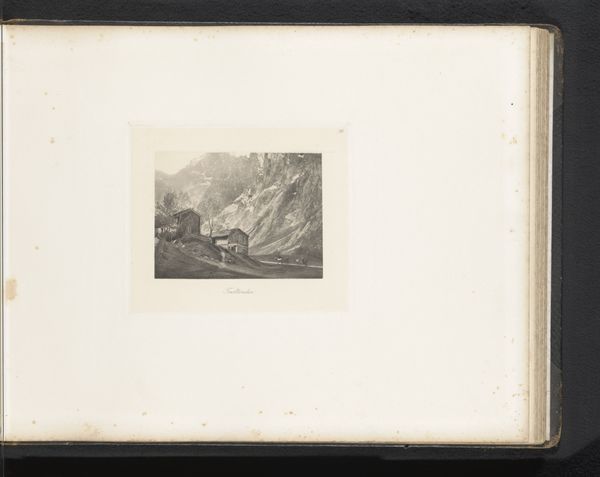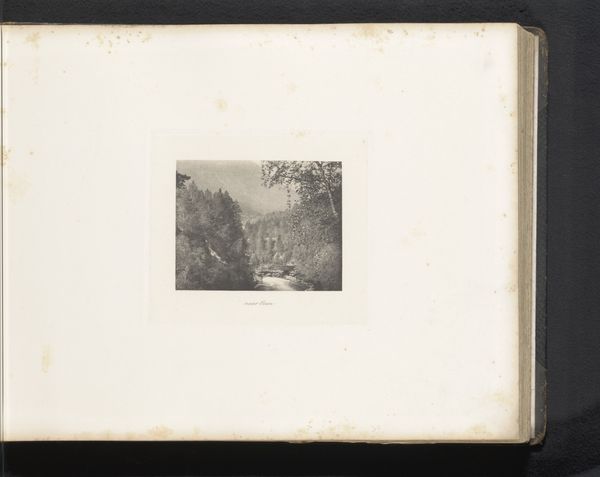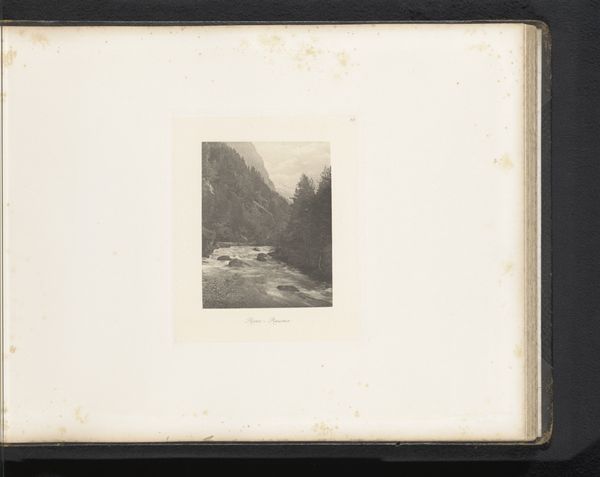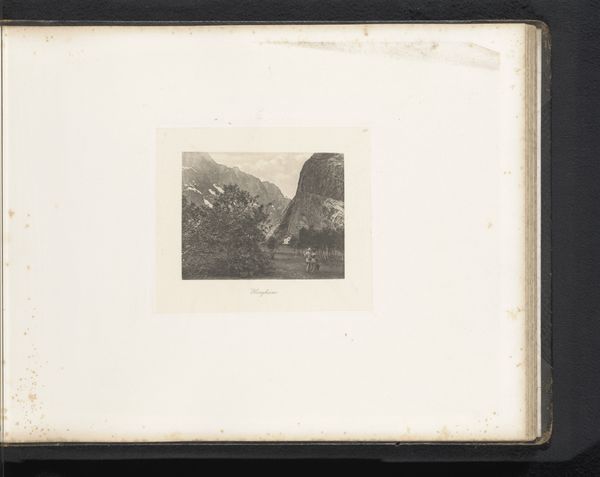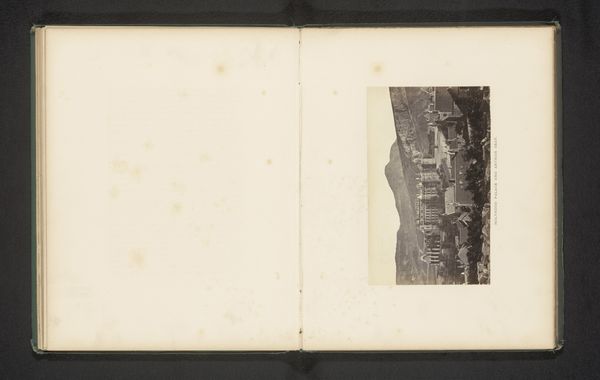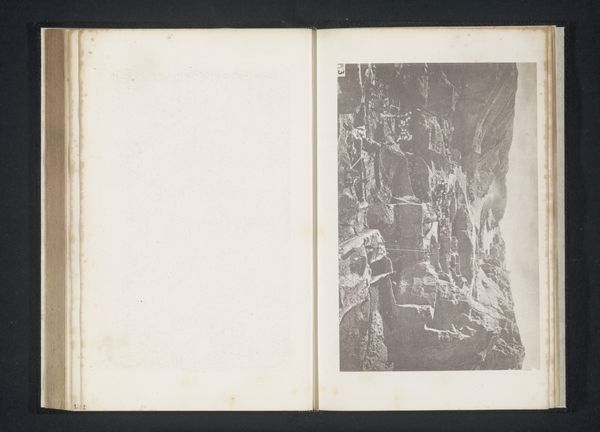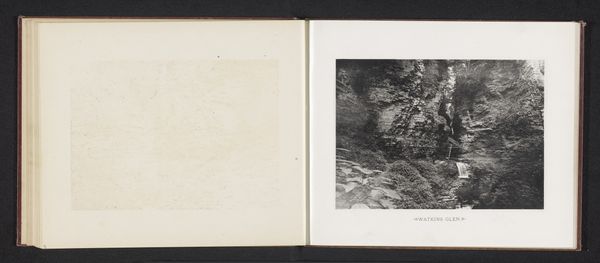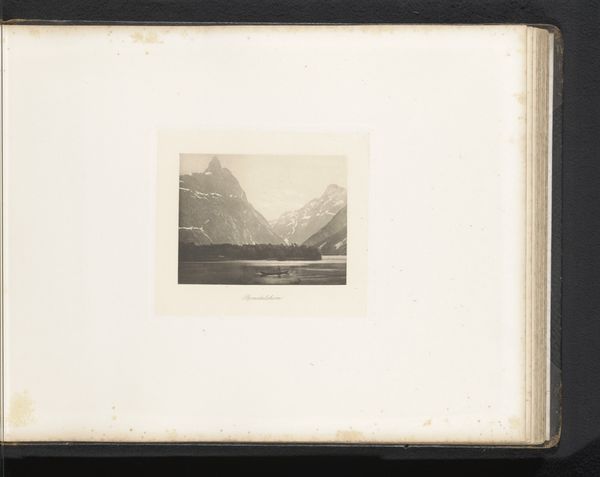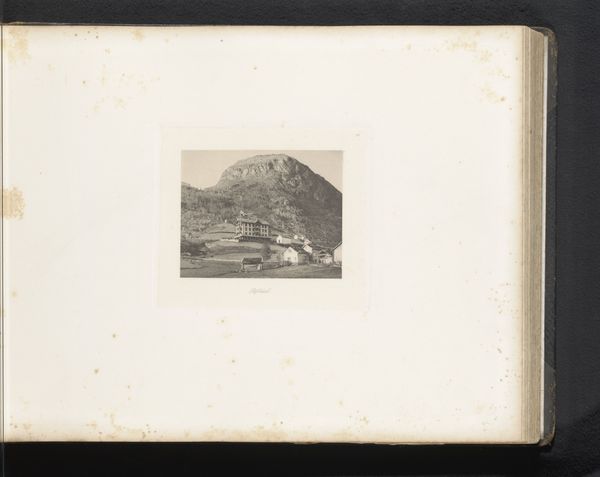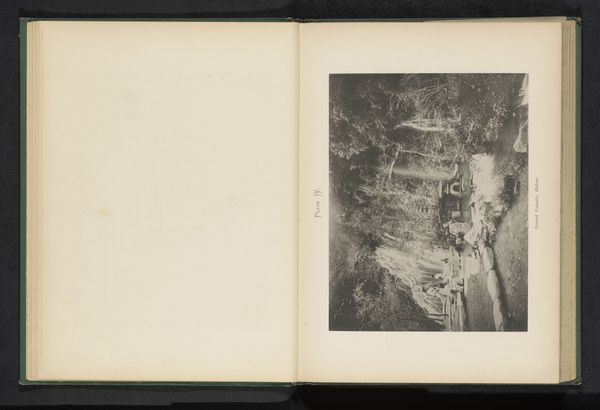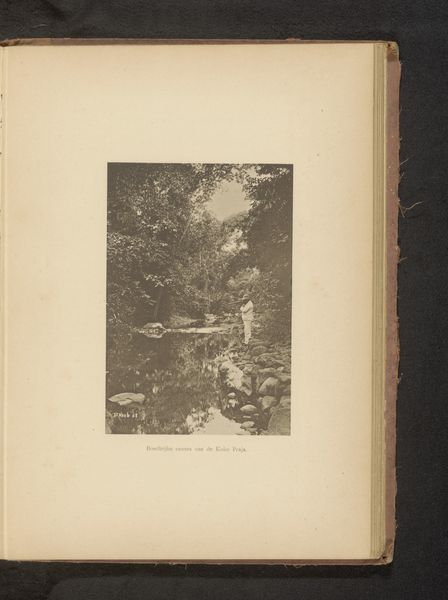
Dimensions: height 90 mm, width 113 mm
Copyright: Rijks Museum: Open Domain
Editor: Here we have Paul Lange's "Gezicht op de vallei van Brattlandsdalen," a gelatin silver print made before 1893. It’s a very tranquil landscape, despite the rushing river. The mountains feel very imposing, even from a distance. How do you interpret the significance of landscape photography at this time? Curator: Well, landscape photography like this really speaks to the evolving relationship between humans and nature in the late 19th century. We're seeing a rise in nationalism and a fascination with the "untouched" wilderness. This image participates in a romanticized view of nature, but think about how images like this could have served as propaganda, too, for settlement or resource extraction. Do you notice anything about the vantage point? Editor: It feels… somewhat staged? Not in a literal sense, but there's a clear foreground, middle ground, and background. Like it's composed to evoke a certain feeling. Curator: Precisely. This carefully constructed view contributes to the artistic movement of Romanticism and to its popularity with the burgeoning middle class. The scale also creates a feeling of sublime power in nature but in a controlled format – a framed photograph. It fits neatly into a bourgeois parlor, not the reality of navigating that landscape. What do you think about that contrast? Editor: I guess it makes sense that the popularity of something is closely tied to its social function and reception, like selling an experience without the…experience. It encourages reflection on power. Curator: Exactly. Lange's image is a great example of how art serves public functions and communicates certain ideologies about landscape, nation, and individual experience within the art market. The “authentic” natural view is never really just that. Editor: I never thought of it that way. This was helpful. Curator: Me too, every piece of art is a sign of social intention.
Comments
No comments
Be the first to comment and join the conversation on the ultimate creative platform.
